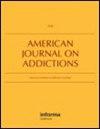The association between cannabis use and suicidal intensity in psychiatric inpatients
Abstract
Background
Over the past 15 years, most states have legalized the medical use of cannabis. Since then, daily use nearly tripled while the number of adults dying by suicide increased by 31%. Key studies found a greater suicidal intensity associated with cannabis use (CU) in adolescents. Adult associations have been understudied. The purpose of this study was to evaluate associations between CU and suicidal ideation intensity (SII) in adults.
Methods
We examined 530 psychiatric inpatients ages 18 and above using the Columbia-Suicide Severity Rating Scale and the Alcohol, Smoking and Substance Involvement Screening Test for CU. We conducted a path analysis model of moderating and mediating factors, including psychiatric comorbidity, emotional regulation, psychological flexibility, and polygenic risk scores for externalization, CU, and suicide.
Results
Sixteen percent of the participants had no suicidality, 34.3% reported suicidal ideation, and 49.6% reported a prior suicide attempt. CU was found to be associated with lower risk of SII for females (p = .026) but not for males (p = .525), and increased CU was associated with greater risk of SII with lower psychological flexibility in males (p = .049) but not females (p = .628).
Conclusions
CU was associated with increased SII among psychiatric inpatients, with sex-specific patterns and potential mediation by psychological flexibility. Further studies exploring specific amounts, duration of use, and time frames of CU during adolescence and adulthood may provide insights into its associated risks, especially as legalization expands.
Scientific significance
Patterns of past and current CU may increase understanding of mechanisms predicting increased SII in adult male psychiatric inpatients.

 求助内容:
求助内容: 应助结果提醒方式:
应助结果提醒方式:


